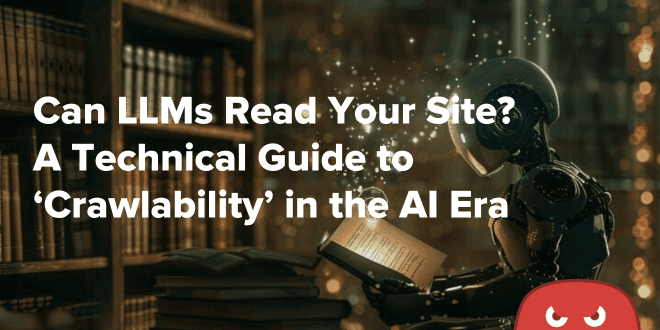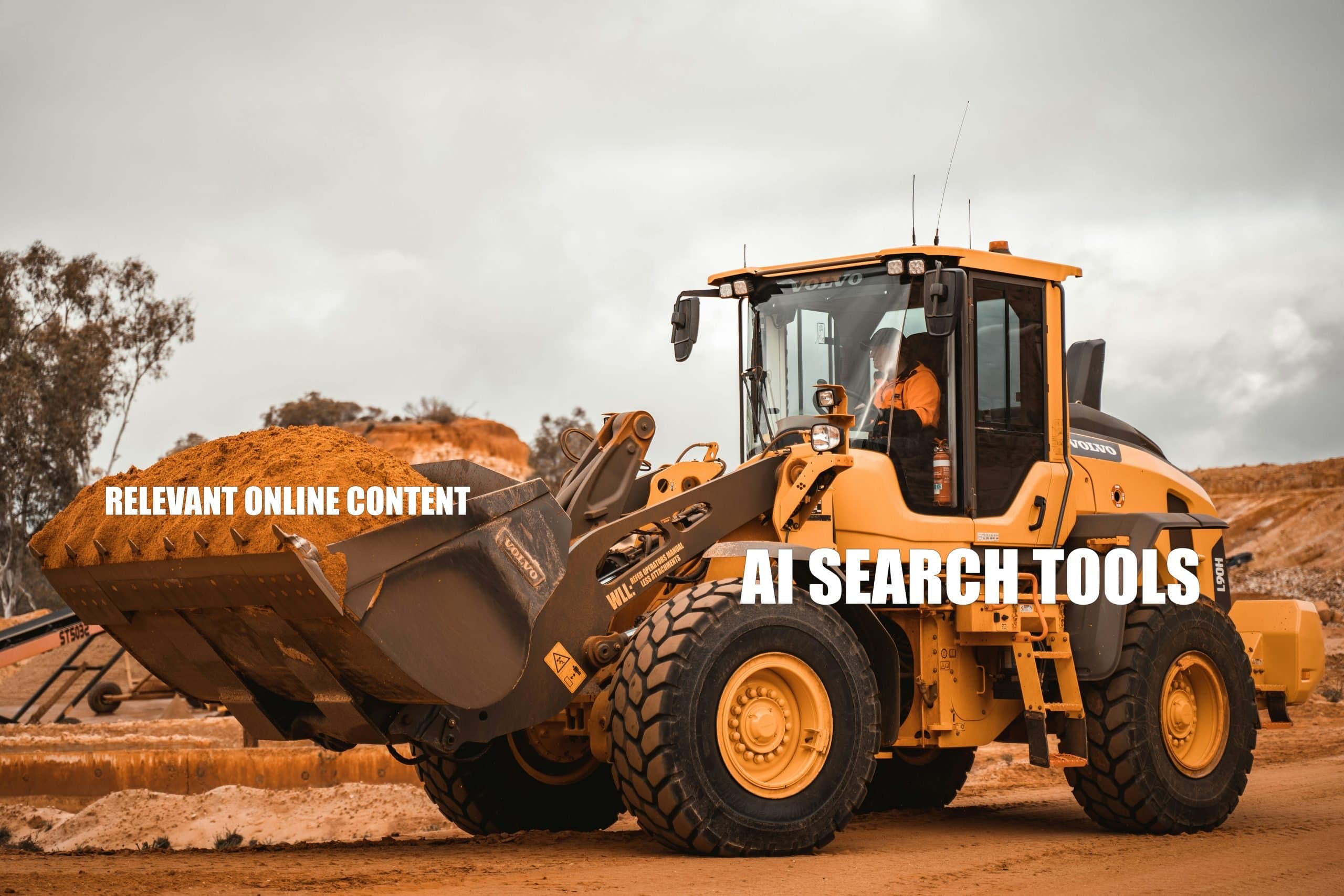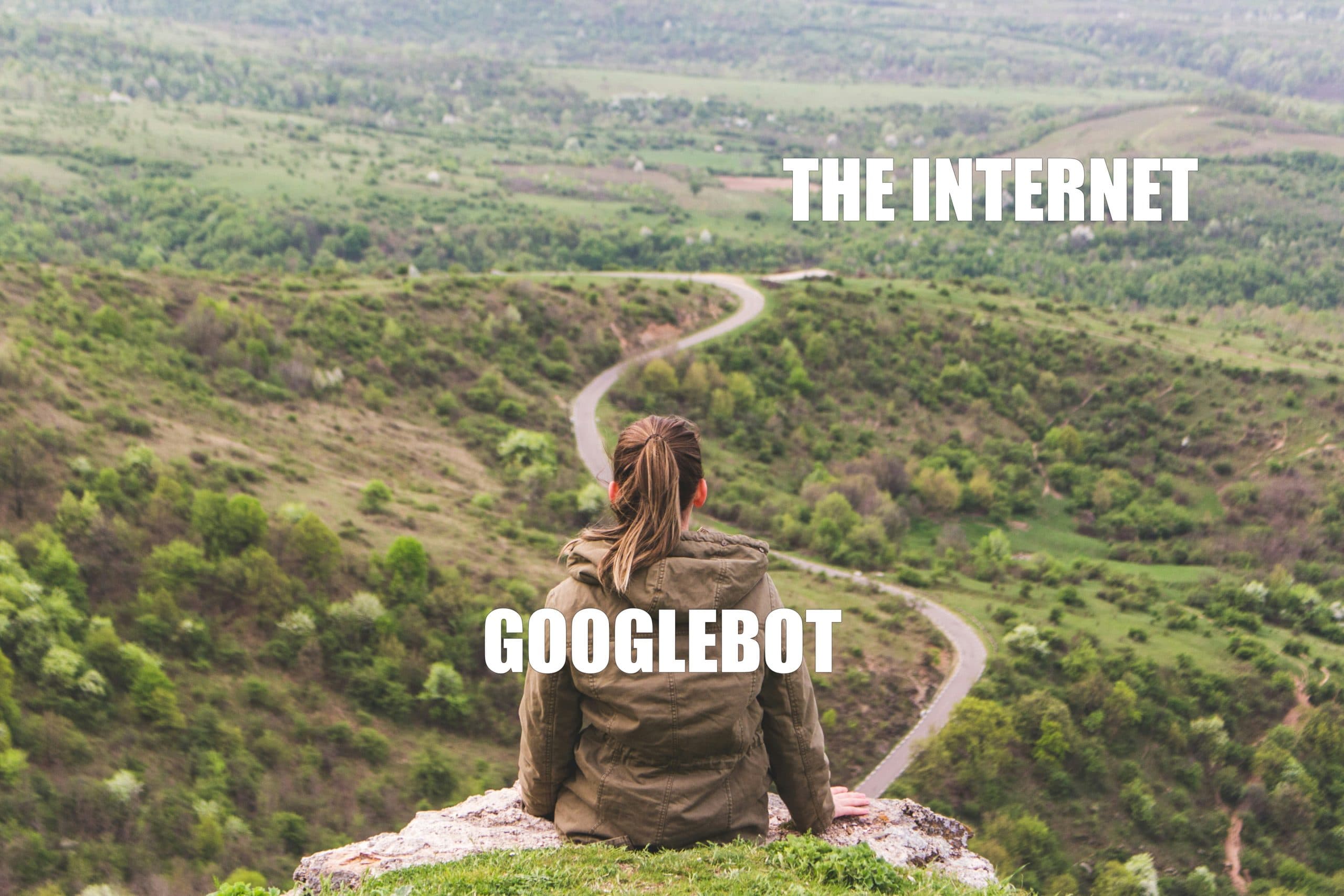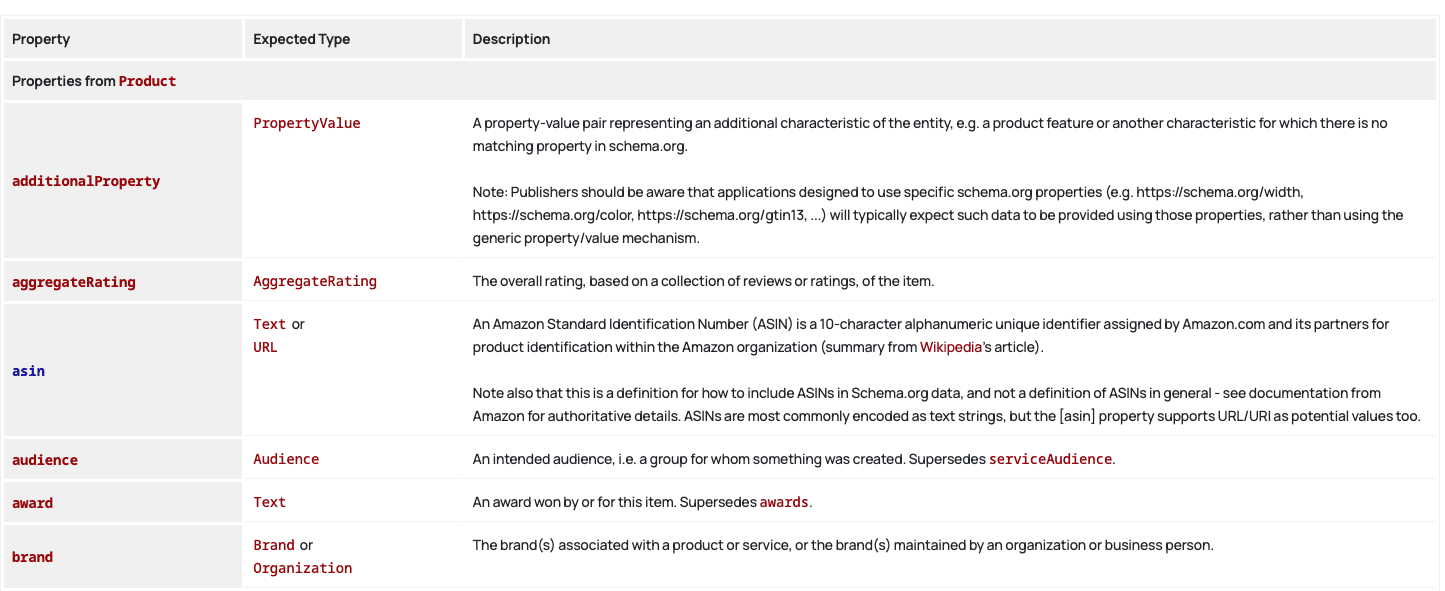
Can LLMs Read Your Site? A Technical Guide to ‘Crawlability’ in the AI Era
What is LLM Crawlability?
First, let’s make a clear distinction. AI search tools don’t ‘crawl’ websites the way that search engine bots do. Instead, they use a combination of APIs, plugins, and scraping tools to pull information from the internet. Traditionally, the term crawling refers to an ongoing discovery process where applications like Googlebot (also called ‘crawlers’ or ‘spiders’) actively locate and index new content on the web. This means Googlebot crawls the internet, follows internal links, and discovers new websites 24/7. It doesn’t need to be prompted by humans to look up information online. AI search tools, on the other hand, DO require prompting to explore the internet. If you don’t prompt an AI search tool to look something up, it has no reason to crawl the internet on its own. Also, crawling and indexing the internet requires A TON of resources, so it’s not something any tool can do on a whim. If AI search tools started crawling the internet in addition to generating answers and summaries (which already takes massive amounts of computation power), it would add unfathomable costs and resource demands. That’s why when LLMs use APIs, plugins, and scrapers, they rely on content that’s already been indexed by major search engines like Google and Bing.| Want to learn more about the difference between AI search tools and traditional search engines? Check out our post on whether AI will replace Google. |
How LLMs extract information from websites
To better understand how AI search and traditional search engines operate, think of the difference between discovery and extraction. When you prompt a tool like ChatGPT to look something up or answer a question that’s not already in its training data, it will extract the answer from relevant sources online. Conversely, Googlebot is always discovering the internet like an explorer on an endless journey.
Conversely, Googlebot is always discovering the internet like an explorer on an endless journey.
 So, when we refer to LLM crawlability, we’re talking about making your website’s content as easy as possible for LLMs to extract.
So, when we refer to LLM crawlability, we’re talking about making your website’s content as easy as possible for LLMs to extract.
Improving LLM Crawlability: Top Optimizations
Now, let’s explore the most effective ways to make it easier for LLMs to pull content from your site. Remember, these tips are for improving your content’s readability to LLMs. While readability is essential to improving AI search visibility, it doesn’t represent the entire picture. Check out our guide on how to get cited in AI Overviews to learn the other factors that matter for improving AI visibility, like brand mentions and author credibility.Tip #1: Use semantic HTML
First, you should use semantic HTML tags on your website. What are those? Semantic HTML tags contain brief descriptors that label certain aspects of a web page, like headers (<header>), navigational links (<nav>), and bulleted lists (<ul> for unordered list). Put simply, they’re semantic labels for specific aspects of your content. On the flip side, non-semantic HTML tags (<div>, <span>, <u>) are generic and don’t label anything. The rule of thumb is that you should always use semantic HTML on your website. Why? Because:- Semantic HTML makes it easier for AI search tools to parse your content and pull specific information (like important quotes, statistics, and links).
- It makes it easier for designers, developers, and SEO professionals to make modifications to your website.
- You’ll improve your SEO and increase your chances of ranking for rich results.
- <header>. This tag represents the introductory portion of your website, like navigation menus and search bars.
- <nav>. Use the <nav> tag for navigational links on your website, like your About, Services, and Contact Us pages.
- <main>. This represents the main section of your website. If it’s a blog post, the entirety of the post would count as the main section. Do not use this tag more than once!
- <section>. You can use this tag if there are distinct sections on a web page, such as a ‘Pricing’ section on a landing page.
- <article>. This tag is for pieces of standalone content like a blog post or news article, but any type of distributable, reusable content can apply (like product reviews).
- <aside>. The <aside> tag is for supplemental content like call-out boxes or sidebars.
- <footer>. This tag defines the footer of a page (which normally contains a sitemap, contact information, and copyright information).
- <ol>. This represents an ordered list that uses numbers.
- <ul>. This tag is for any type of list that doesn’t use numbers (bullet points, checkmarks, etc.).
- <h1> to <h6>. These tags represent the different size headings you can use for articles. Be sure to only use H1 once and to follow in order after that (H3s after H2s and so on).
- <figure>. This tag is for media like images, infographics, charts, and other types of figures. If there’s a caption included, include the <figcaption> tag, too.
Tip #2: Add schema markup
 Next, you need to add structured data to your website via schema markup, an agreed-upon format for structured data across virtually all major websites.
Schema.org contains a full list of usable schemas.
We also have several guides on the topic, including a quick version.
In a nutshell, schemas are labels for specific types of your content, much like semantic HTML. However, instead of defining things like headers and footers, schema markup labels:
Next, you need to add structured data to your website via schema markup, an agreed-upon format for structured data across virtually all major websites.
Schema.org contains a full list of usable schemas.
We also have several guides on the topic, including a quick version.
In a nutshell, schemas are labels for specific types of your content, much like semantic HTML. However, instead of defining things like headers and footers, schema markup labels:
- Products
- Authors
- How-to guides
- Recipes
- Reviews
- Way more
Tip #3: Include internal links
This tip isn’t a direct way to improve LLM crawlability, but it will have indirect effects. Remember how we said that most AI search tools rely on content already indexed by search engines? Well, applications like Googlebot will follow internal links to discover the pages on your website. If you don’t include internal links in your content, Googlebot may miss crucial content that you want included in its index. If your content isn’t indexed by the major search engines, it’ll be practically impossible for AI search tools to find. Thus, more internal links equal better crawlability, which improves AI visibility indirectly.Tip #4: Improve website speed
 Lastly, slow site speed is always a recipe for disaster.
If human users, search bots, and AI tools have one thing in common, it’s that they don’t like slow websites with poor optimization.
As a result, fast website speed and a pleasant user experience are both essential for strong SEO and AI visibility.
Lastly, slow site speed is always a recipe for disaster.
If human users, search bots, and AI tools have one thing in common, it’s that they don’t like slow websites with poor optimization.
As a result, fast website speed and a pleasant user experience are both essential for strong SEO and AI visibility.
| Not sure if your site speed is up to snuff? One of our Technical Audits will let you know (and include plenty of ways to speed things up)! |
Final Thoughts: Can AI Read Your Site?
To summarize, LLM crawlability is all about making your content easy for AI search tools to read and extract. While LLMs don’t actively crawl the internet, they can still access your content through APIs, plugins, and scraping tools. Traditional search optimizations also still matter, as LLMs rely on existing search indexes to find content. That means you should still pay attention to things like internal links and site speed. Do you want to ensure your website is LLM-ready? Don’t wait to book a free strategy session with our expert team!The author
Rachel Hernandez
description
Previous
Which Marketing Channel Has the Lowest Cost Per Lead?
Next
Optimizing Content for AI Overviews: 7 Best Practices
Discussion
Comments
Anju
October 7th, 2025
Thank you for sharing the article.
Louise Savoie
July 30th, 2025
This guide really cleared things up! It’s easy to focus on search engines and forget how AI tools are changing the game too. Great breakdown!
